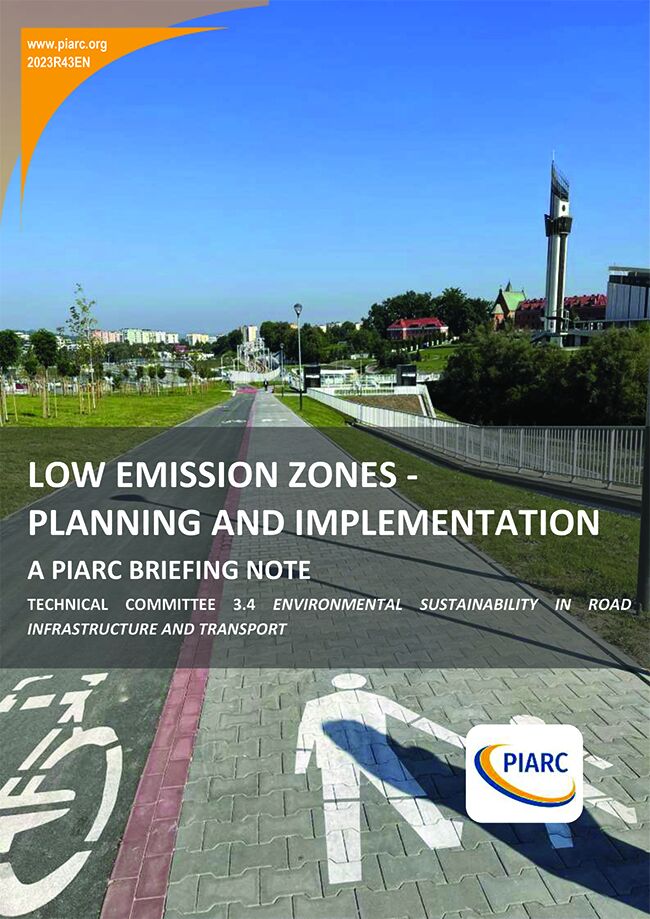Low Emission Zones – Planning and Implementation - A PIARC Briefing Note

Air pollution problems are often observed in the roadside areas of metropolitan regions, where a lot of emission sources such as factories, business offices, residential houses and vehicles accumulate. Increasing congestion in cities with no or limited restrictions on driving in urban areas is contributing to a number of social- and health-related problems. Many countries are considering various types of restrictions on car traffic – especially in urban centers.
The fastest-growing scheme since 2019 is the introduction of Low Emission Zones (LEZs). During the 2019-2023 cycle, PIARC Technical Committee 3.4, Environmental sustainability, assessed the different the different ways of setting up LEZs and their consequences.
The aim of this briefing notes is to illustrate the different types of automobile traffic restrictions and the methods associated with them. Therefore, two case studies (Krakow, Poland, and Antwerp, Belgium), representative of the different ways of designing LEZs at different times and socio-economic conditions, are presented. Finally, the note presents some assessment elements and proposes recommendations on the elements to be taken into account for LEZs, especially in legislative frameworks, planning and implementation.
Information sheet
- Date: 2023
- Author(s): Comité technique / Technical Committee / Comité Técnico 2020-2023 3.4 Infrastructures et transport routiers plus durables pour l’environnement / Environmental Sustainability in Road Infrastructure and Transport / Sostenibilidad ambiental en infraestructura vial y transporte
- Domain(s): Environment / Road Network Operations
- Type: 2023R43EN - Low Emission Zones – Planning and Implementation
- PIARC Ref.: 2023R43EN
- ISBN: 978-2-84060-831-8
- Number of pages: 24